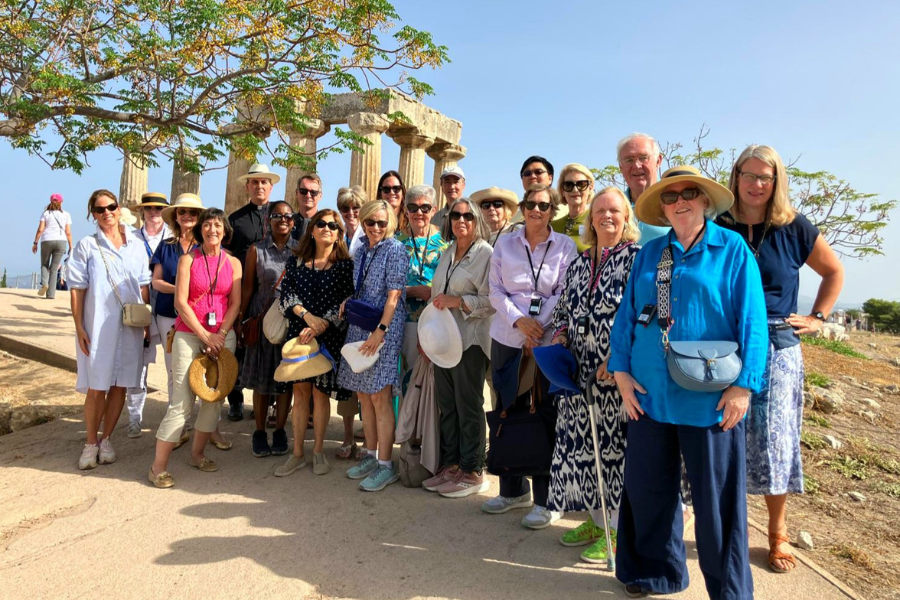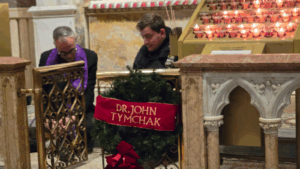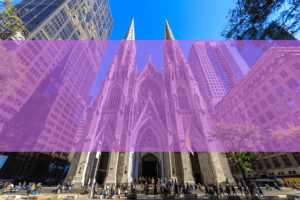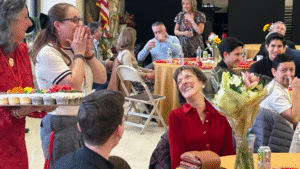Ours was a remarkable journey with Fr Eric Nielsen and 21 other pilgrims as we traveled to Turkey and Greece: Walking in the Steps of St. Paul. I was filled with grace, stepping on the ground where St. Paul established numerous Christian communities and wrote many epistles. Fr Eric was rechristened “Fr Epic” by a typo on our tour bus placard. Epic describes both Fr Eric and our experience.
I never imagined that I would travel to Philippi, where Saint Paul established the first church in Europe, and see the ancient forum and jail where Paul and Silas were imprisoned and miraculously released.
We continued with a beautiful drive to Meteora, its fourteenth-century Byzantine monasteries perched on huge finger-like rocks. Inside the St. Stephen’s Monastery, we saw a solemn sanctuary and beautiful tapestries and ornaments made by the monks. It was a spiritual experience to see the breathtaking views and imagine a life of prayer high up upon these massive rocks.
We followed this by cruising in the Aegean Sea, where we visited Mykonos and explored numerous chapels, each a testament to the island’s deep-rooted faith. The beauty and simplicity of these holy spaces offered moments of quiet reflection.
One of the most moving experiences of the trip was visiting ancient Ephesus, where Mary, the Mother of our Lord, lived the final years of her life with Saint John. In his Gospel, John tells us that Jesus, before dying on the Cross, entrusted to him to care for her when he said, “Here is your mother.” From that, St. John took her into his home. We had the honor of celebrating mass with our Fr. Epic!
Traveling to yet another island to Patmos where Saint John wrote the Book of Revelation, we marveled at the distance and treachery that St. Paul endured on his missions to spread God’s Word.
St. Paul’s Bay in Lindos on the island of Rhodes, where the Apostle cast anchor and set sail on his way to Ephesus, was a spectacular site with impressive ruins and evidence of the ancient church of Ayios Ioannis, built in the 12th/13th century.
Another impressive visit was to the ancient city of Crete, where St. Paul landed because of severe winds (Acts 27:7). The island’s rich history and numerous religious monuments, including monasteries, churches, and ancient ruins, reflect the enduring influence of Christianity.
Standing in the ruins of the church of Corinth, where St. Paul preached to the Corinthians and wrote his first two letters, was moving and spiritual. We had a beautiful mass set among the ruins, with an insightful reflection from Fr. Epic.
Each day included a group rosary, usually completed on the bus while traveling between locations. This kept the pilgrimage connected to God while absorbing the enormity and difficulty of Paul’s mission.




